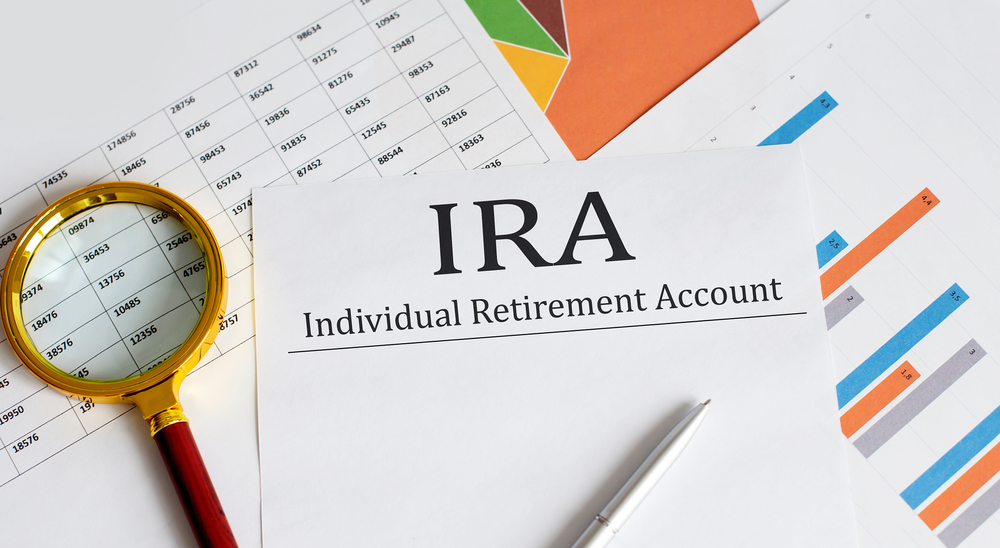Retirement Planning Falls Short for Some, Underscoring Gap Between Intent and Action
Many Americans Unprepared for Life After Work
Healthcare is Retirement Wild Card
IRALOGIX, the retirement industry’s leading fintech pioneer, today announced the debut of the IRALOGIX Retirement Readiness Index (IRRI), a comprehensive national benchmark built to track Americans’ preparedness to retire with financial security and peace of mind.
In its inaugural Q1 2025 evaluation, the IRALOGIX Retirement Readiness Index (IRRI), which measures Americans’ retirement preparedness across five critical areas, reported a national Retirement Readiness Score of 45.8 out of 100. Scores below 50 fall into the ‘Moderate Risk’ zone, indicating that many pre-retirees may face uncertain futures without adequate savings, healthcare coverage, or financial confidence to sustain themselves through retirement.
The IRRI distills the complex reality of retirement planning into a single, powerful number that will trend over time. Based on nationally representative survey data, the IRRI measures readiness across five critical dimensions: Savings and Investments, Healthcare Readiness, Lifestyle and Spending, Emotional Well-being, and Economic and Policy Confidence.
“This score is a wakeup call for America’s households, employers, and policymakers,” said Peter J. de Silva, CEO of IRALOGIX. “It’s not just a number, it’s a mirror held up to the financial anxieties, gaps in planning, and uncertainty that millions of Americans face as they approach one of life’s most important milestones: retirement. Our data shows that too few are prepared for both the financial and personal impact of aging-related issues, and are struggling with saving enough, planning for healthcare, and trusting that essential benefits like Social Security will be there when they need them. We believe the path to retirement readiness begins with awareness, and the IRRI is a step towards securing a more stable future for everyone.”
Retirement Readiness: Potential vs. Reality
When analyzing the results, each retirement readiness category (such as Healthcare Readiness or Savings and Investments) was assigned a maximum number of points it could contribute to the overall Retirement Readiness Score. This represents the “full potential” if Americans were perfectly prepared in that area. Based on survey responses, the “potential achieved” percentage tells us how much of that maximum was actually reached. The lower the percentage, the further away Americans are from being fully prepared in that dimension.
Where Americans Are Falling Behind: The Weakest Dimensions
Healthcare Readiness – 42.1% of Potential Achieved
Out of a possible 15 points that Healthcare Readiness could contribute to the national score, Americans only reached 6.3 points. This equates to just 42.1% of the ideal score in this area, making it the lowest-performing dimension.
What this means: Many lack a solid plan to manage healthcare costs in retirement, especially long-term care, which can quickly erode savings. Key gaps were noted in uncertainty about whether Medicare will meet future needs, absence of a plan for handling unexpected medical expenses, and fear of financial ruin from chronic illness or elder care. In an October 2024 survey on decumulation in retirement conducted on behalf of IRALOGIX, 37% of retirees said healthcare costs were their biggest withdrawal challenge, reinforcing the idea that healthcare isn’t adequately prioritized, either before or during retirement.
Savings and Investments – 43.2% of Potential Achieved
This category has the biggest influence on retirement readiness, with a maximum of 35 points available. Yet, respondents only realized 15.1 points, reaching just 43.2% of the potential in this crucial area.
What this means: Despite its importance, many are not saving enough or don’t know if their savings will last through retirement. Key gaps included low confidence in current savings, lack of a written retirement plan, and few respondents meeting regularly with financial advisors for retirement advice.
Lifestyle and Spending – 46.5% of Potential Achieved
Out of 15 possible points, respondents only realized 6.97 points in this area. That’s just 46.5% of the potential, signaling that Americans are underprepared to manage day-to-day expenses in retirement.
What this means: Many Americans have not fully transitioned from an earning mindset to a spending and sustaining mindset for retirement or created a detailed retirement budget that accounts for inflation, healthcare, or changes in income sources. Key gaps were noted in a heavy dependence on non-guaranteed income sources, and concern that working during retirement will be necessary, not optional. Survey responses also suggest that pre-retirees are adjusting their definition of retirement. For many, the idea of fully stepping away from work is no longer realistic or even desirable. Instead, they’re anticipating a retirement that includes part-time work, consulting, or phased retirement. Whether driven by financial pressure or a desire to stay engaged, this shift underscores the need for more flexible and personalized retirement planning.
Where Americans Are Doing Better: The Strongest Dimensions
Economic and Policy Confidence – 50.8% of Potential Achieved
Americans achieved 10.2 out of 20 possible points in this area, making it the highest among all categories, though still well below ideal.
What this means: There’s moderate confidence in navigating future economic and policy changes, but inflation remains a major concern. Notable insights included that half of the respondents expect Social Security to remain intact, many are using tax-advantaged retirement savings tools, but not fully, and widespread concern that inflation will erode retirement savings.
Emotional Well-being – 48.3% of Potential Achieved
Americans achieved 7.25 out of 15 points here, showing moderate preparedness for the emotional side of retirement.
What this means: While many respondents have strong social networks and plans for engaging in activities, others haven’t communicated their retirement plans with family, which can create stress down the line. Notable insights include positive scores in social support and hobbies and lower scores in family communication and transition planning.
“Retirement readiness is not just a personal issue, it’s a societal one,” said Peter de Silva. “When individuals are unprepared for retirement, the ripple effects are felt across families, workplaces, communities, and the broader economy. The IRRI was created to do more than just measure, it was designed to spark a national conversation, shine a light on the areas where Americans are falling short, and provide a roadmap to take action. With individuals facing longer lifespans, rising healthcare costs, and economic uncertainty, the IRRI will remind policymakers, employers, and financial institutions to work towards better solutions.”
Added Pete Littlejohn, President of IRALOGIX, “The good news is that retirement readiness isn’t out of reach, but it does require action. Americans can start by getting informed, setting clear goals, and using the tools available to them, from workplace retirement plans to personal savings and trusted financial advice. Preparation is power, and every step taken today helps build the confidence and security needed for tomorrow.”
Looking Ahead
IRALOGIX will redeploy the IRRI to track trends over time to elevate the national conversation around retirement readiness, paving the way for Americans to retire with dignity and security.
Methodology
The IRALOGIX Retirement Readiness Index score is a data-driven measure of how prepared Americans are for retirement, expressed on a scale from 0 to 100. The score is derived from a nationally representative survey in which respondents answered 20 questions across five dimensions. Each question was rated on a 1-5 scale, with responses converted to a 0-100 score and weighted according to its importance within its category. The five dimensions were also weighted based on their overall contribution to retirement readiness, with financial preparedness emphasized the most. Each respondent’s weighted scores were totaled to generate an individual readiness score. The national Retirement Readiness score reflects the average of all responses. Risk zones in the IRRI are based on common indexing practices and are: High Risk (0-34.9), Moderate Risk (35.49.9), Caution Zone (50-64.9), Prepared (65-79.9), and Retirement Ready (80-100).
The survey was conducted in late March 2025 on behalf of IRALOGIX. Respondents were 62.67% male and 37.33% female, drawn from a national sample of pre-retirees.
To schedule an interview or for more information on the survey results or the index, don’t hesitate to get in touch with Scott Sunshine.
About IRALOGIX™
IRALOGIX is redefining the $14.5 trillion IRA marketplace through its industry-leading
technology-enabled, fully paperless, white-label IRA record-keeping and technology solutions.
The company’s proprietary technology solutions enable any financial institution to easily
customize its IRA offering and compete effectively in all segments of the IRA market, regardless
of account size. Through modular technology, institutional clients have the choice to use their
internal investment or advisory capabilities or select from key industry-leading providers.
IRALOGIX complements your market strategy, streamlines your IRA service options, and helps
you expand your business across all segments of the industry, profitably. For more information,
please visit www.iralogix.com.



